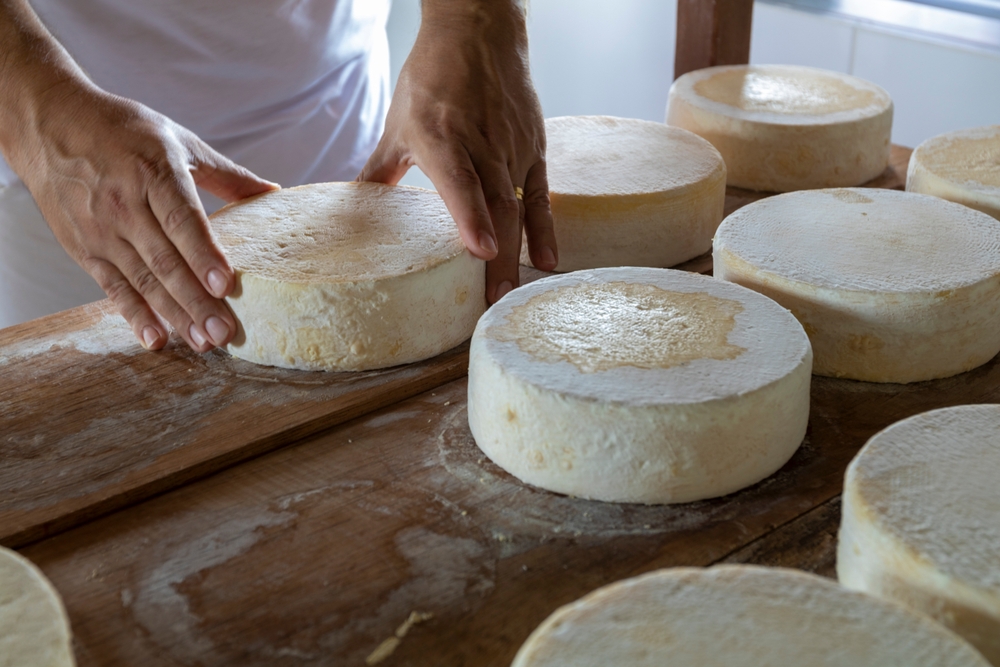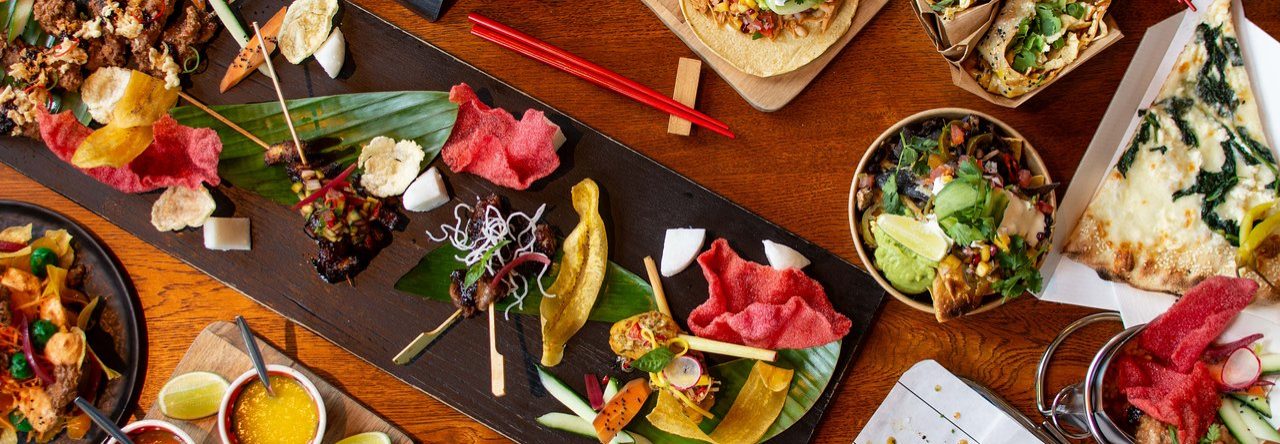In an era dominated by mass production and convenience foods, there has been a remarkable resurgence in traditional food crafting techniques. This artisanal revival, characterized by a return to time-honored methods of preparation and preservation, is more than a trend; it is a movement that celebrates heritage, flavor, and sustainability. The renewed interest in artisanal food crafting reflects a broader cultural shift towards valuing quality, authenticity, and connection to our food sources.
The Origins of Artisanal Food Crafting
Artisanal food crafting is rooted in centuries-old practices where food was prepared by hand, often using methods passed down through generations. These techniques were developed out of necessity, to preserve food and enhance its flavor in the days before refrigeration and modern preservatives. From the curing of meats and fermentation of vegetables to the baking of bread and brewing of beverages, these practices were integral to daily life and community identity.
In many cultures, the creation of food was a communal activity, bringing people together and fostering a sense of shared heritage. Techniques varied by region, influenced by local ingredients and climate, leading to a rich diversity of flavors and traditions. As industrialization progressed, many of these methods were overshadowed by mass production, which prioritized efficiency and uniformity over craftsmanship and flavor.
The Modern Artisanal Movement
The modern artisanal movement seeks to reclaim these traditional techniques, emphasizing the importance of craftsmanship, quality ingredients, and sustainability. This revival is driven by consumers who are increasingly disillusioned with the impersonal nature of industrial food production and are seeking out products that offer a connection to heritage and a sense of place.

One of the hallmarks of the artisanal movement is the use of local and seasonal ingredients. By sourcing materials from nearby farms and producers, artisans can ensure the freshness and quality of their products while also supporting local economies. This approach not only results in superior flavor but also reduces the environmental impact associated with long-distance transportation of food.
The Bread Renaissance
One of the most visible aspects of the artisanal revival is the resurgence of traditional bread-making techniques. Artisan bakers are returning to methods that prioritize slow fermentation, natural leavening, and high-quality grains. This contrasts sharply with the quick-rise, additive-laden breads commonly found in supermarkets.
Sourdough, in particular, has experienced a renaissance. The process of making sourdough involves a natural fermentation that enhances both flavor and digestibility. Artisan bakers often cultivate their own sourdough starters, which can be maintained for years, becoming unique to their bakeries and adding a personal touch to their loaves.
The rise of interest in ancient grains like spelt, einkorn, and emmer has further fueled the artisanal bread movement. These grains, which are less processed than modern wheat varieties, offer distinct flavors and nutritional benefits. By reviving these grains, bakers are preserving agricultural biodiversity and offering consumers a taste of the past.
Craft Beverages: A Fermented Revival
Craft beverages, particularly beer and cider, are another area where traditional techniques are being enthusiastically embraced. Microbreweries and craft cideries are popping up across the globe, each offering unique flavors derived from local ingredients and innovative brewing methods.
The craft beer movement has reignited interest in a variety of brewing styles, from rich, dark stouts and porters to hoppy IPAs and sour ales. Brewers are experimenting with traditional ingredients like wild yeasts and heirloom barley, as well as adding local fruits, herbs, and spices to create distinctive brews. This creativity and commitment to quality have earned craft beers a dedicated following, and many enthusiasts are turning away from mass-produced options in favor of artisanal brews.
Similarly, the craft cider movement is bringing back traditional apple varieties and fermentation methods. Craft cider makers often use heirloom apples that are specifically grown for cider production, resulting in complex flavors that reflect the terroir of their orchards. The use of wild fermentation, where natural yeasts from the apples and environment are allowed to ferment the cider, adds an additional layer of uniqueness and authenticity.
The Cheese Renaissance
Artisanal cheesemaking has also seen a significant resurgence. Cheesemakers are returning to traditional methods, using raw milk and natural aging processes to produce cheeses with depth and character. The use of raw milk, in particular, allows for the development of complex flavors that are often lost in pasteurized products.
The variety of artisanal cheeses now available is staggering, from soft, creamy bries and tangy goat cheeses to aged cheddars and pungent blues. Cheesemakers are experimenting with different milks (cow, goat, sheep, and even buffalo), aging techniques, and molds to create new and exciting flavors.
This revival has also led to a renewed appreciation for regional cheeses that were once in danger of disappearing. By supporting local dairies and preserving traditional methods, artisanal cheesemakers are playing a crucial role in maintaining cultural heritage and agricultural diversity.
Fermented Foods: Health and Heritage
Fermentation is one of the oldest food preservation techniques, and it has enjoyed a revival as part of the artisanal movement. Fermented foods like sauerkraut, kimchi, and pickles are prized not only for their flavors but also for their health benefits. The natural fermentation process creates beneficial probiotics, which can improve gut health and boost the immune system.
Artisans are experimenting with fermentation, creating innovative products that combine traditional techniques with modern flavors. Fermented hot sauces, miso pastes, and kombuchas are just a few examples of how fermentation is being reimagined for contemporary palates.

The interest in fermentation also ties into the growing awareness of sustainability and reducing food waste. Fermenting surplus vegetables and fruits is an excellent way to preserve their nutritional value and prevent them from going to waste.
The Importance of Sustainability
A key aspect of the artisanal revival is its emphasis on sustainability. Artisans are often deeply committed to environmental stewardship, from sourcing ingredients responsibly to minimizing waste in their production processes. This commitment extends to packaging as well, with many producers opting for eco-friendly materials that can be recycled or composted.
Local sourcing is a significant component of this sustainable approach. By supporting local farmers and producers, artisans reduce the carbon footprint associated with transporting ingredients over long distances. This not only helps the environment but also strengthens local economies and communities.
In addition to environmental sustainability, there is a strong focus on economic and social sustainability within the artisanal movement. Many artisans operate small-scale, family-run businesses that prioritize fair labor practices and contribute to the local economy. This stands in stark contrast to the often exploitative practices of large-scale industrial food production.
The Role of Education and Community
Education plays a crucial role in the artisanal revival. Artisans often take on the role of educators, sharing their knowledge of traditional techniques with consumers and aspiring food crafters. Workshops, classes, and demonstrations are common, providing opportunities for people to learn about the intricacies of bread baking, cheesemaking, brewing, and more.
This educational aspect helps to demystify traditional food crafting techniques, making them more accessible to a wider audience. By learning these skills, individuals can gain a greater appreciation for the craftsmanship involved and are more likely to support artisanal producers.
Community is another important element of the artisanal movement. Farmers’ markets, food festivals, and co-ops provide platforms for artisans to connect with consumers and each other. These venues foster a sense of community and allow artisans to share their stories and products directly with those who appreciate their work.
Challenges and Opportunities
While the artisanal revival has garnered significant attention and support, it also faces challenges. Artisanal producers often operate on a small scale, which can make it difficult to compete with the prices and distribution networks of large industrial producers. Ensuring consistent quality and meeting regulatory requirements can also be challenging for small-scale artisans.
However, these challenges also present opportunities for innovation and growth. The growing demand for artisanal products has led to the development of new distribution channels, such as online marketplaces and subscription services, which connect artisans with a broader audience. Additionally, consumer interest in transparency and ethical sourcing provides a strong foundation for the continued growth of the artisanal movement.
Conclusion
The artisanal revival represents a return to traditional food crafting techniques that prioritize quality, sustainability, and connection to heritage. By embracing methods that have stood the test of time, artisans are not only preserving cultural traditions but also providing consumers with products that are rich in flavor and authenticity. This movement is a response to the homogenization and impersonal nature of industrial food production, offering an alternative that values craftsmanship and community.
As the artisanal movement continues to grow, it offers a hopeful vision for the future of food—one where traditional techniques and modern innovation coexist to create a more sustainable, flavorful, and connected world. Through their dedication to quality and sustainability, artisanal food crafters are shaping the way we think about and interact with our food, ensuring that these time-honored practices will be passed down to future generations.


